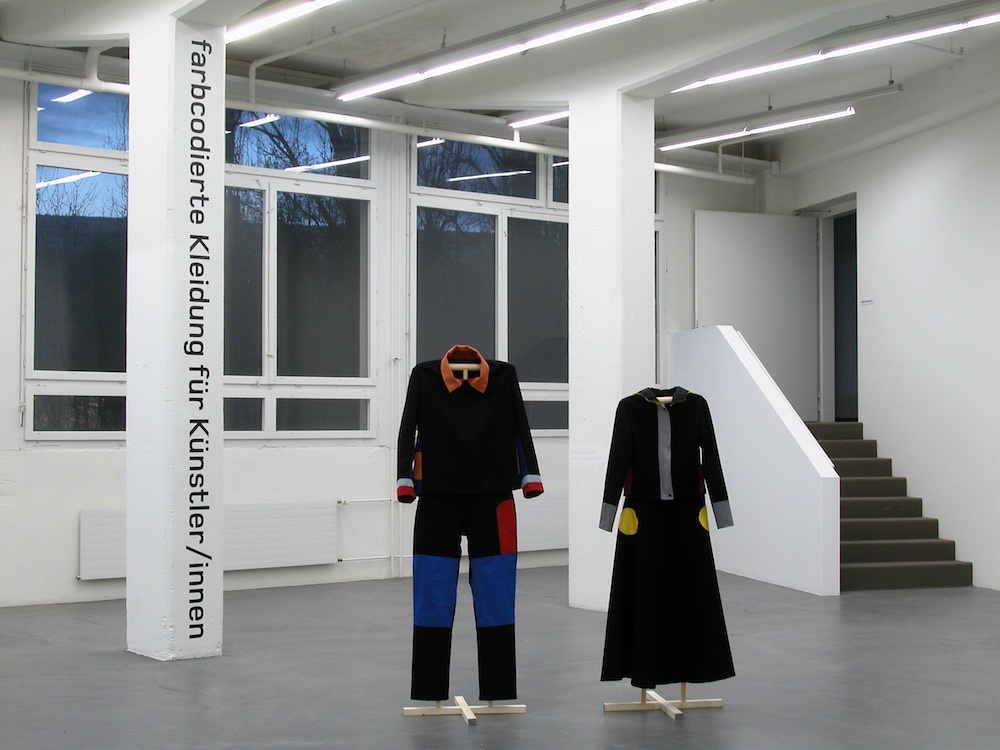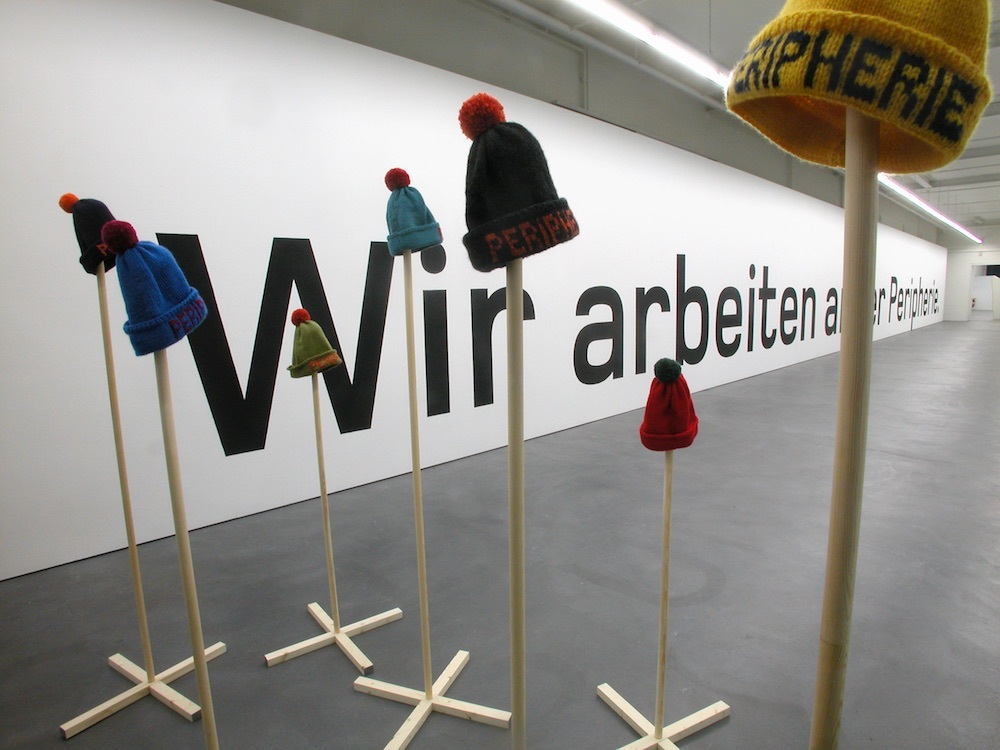Dellbrügge & de Moll
Model of Obstinacy
17.1. —
29.2.2004


Where are we? This is not the Basler Kunsthalle, and definitely not the Museum für Gegenwartskunst. We rub our eyes. There is no doubt: We are in a slightly cluttered industrial architecture.
Something obviously turned into an art institution, making do with scarce resources, right here in the boondocks. Or, to put it more accurately, on the outskirts. Welcome to the Kunsthaus Baselland. If we wanted to locate and thereby identify ourselves we could say that we work in the periphery—both geographically and ideologically. However, we want to be in the heat of the action, immerse ourselves in the hustle and bustle, thread our way into the center of attention and attraction. But how? (Stomping, drumming our fists, banging our heads, screaming until we stop breathing,…) By donning our periphery caps we might mitigate our pigheadedness, our wounded narcissism. Sulkiness is triggered by the capacity to imagine a goal and to see yourself as its origin. You identify yourself and become committed. If you encounter an obstacle in implementing the goal and if there is no alternative plan available, the system will collapse. Obstinacy, negativity, and extreme pigheadedness are commonly regarded as signs of immaturity. As we acquire language and many other skills, i.e. by learning how to access our environment and how to adapt to given circumstances, this behavior is alleviated. The artist is both a conformist and a rebel. Renegades and outlaws conform themselves involuntarily—they meet society’s expectation that artists are bound to be recalcitrant and given to opposition. Being an artist means to play a part. The “Model of Obstinacy” stands for the distant, vicarious, and exemplary nature of the artist’s function as a model. No wonder then that tears are shed when it becomes clear that this was not intended at all, and that the actual purpose of art is to heal and elevate aesthetically, rather than change something in real terms. The “Model of Obstinacy” defines a stubborn insistence on one’s own goals as quality. By wearing T-shirts reading “Trotzmodell TM” visitors can assert that they believe in the Model of Obstinacy, and they can carry stubbornness from the periphery right into the center. In an effort to render the complexity of an artist’s role transparent, Dellbrügge & de Moll have devised a dress code that serves as a communication instrument. Color-coded clothing for artists, allowing an unambiguous economic and ideological categorization of its wearers. Two prototypes have been designed for the exhibition in the Kunsthaus Baselland.
In the exhibition Dellbrügge & de Moll quote their watercolor Elfenbeinturm (Ivory Tower) of 1991: “We can no longer act as role models.” — “Exactly. We retire and devote our attention to landscape painting.” A defiant reaction to the purported social irrelevance of art. In the periphery you learn very quickly that an institution is not just made up of its architecture, its administration, and a loose string of non-permanent shows, but that it relies heavily on its public. If the latter appropriates the place, it is only of secondary importance where the place is located and what actually goes on there. What is crucial is that visitors become involved. With the series of photographs Kunst-Werke ’93 (Art-Works ’93), Dellbrügge & de Moll transferred the Berlin exhibition venue bearing the same name to Muttenz (it had completed its conversion from a heterogeneous art platform to a well-established and hermetic, self-contained institution). If you are not in the center you have to encourage people to move to the periphery. As an example, let us look at the rituals of event catering. Don’t we all just love the sumptuous displays of food and beverages at high-caliber openings? We crave for lavish buffets that make us forget our ignominious defeats — coming too late, getting shortchanged, not being admitted. But there is no denying the fact: Artists neither act as role models nor as service-providers anymore. Abundance is only conceivable if everybody shares and contributes generously to the buffet canadien. Americans call this custom “potluck”, not to be confounded with the Maori ritual of Potlatch, described by Marcel Mauss as an excessive exchange of gifts. What this is about is not a circulation of commodities inspired by economic processes; rather, the aim is to make social connections for the sake of this staged buffet. Our motto is therefore: “Let’s all make a contribution to the buffet!”
Text by Dellbrügge & de Moll